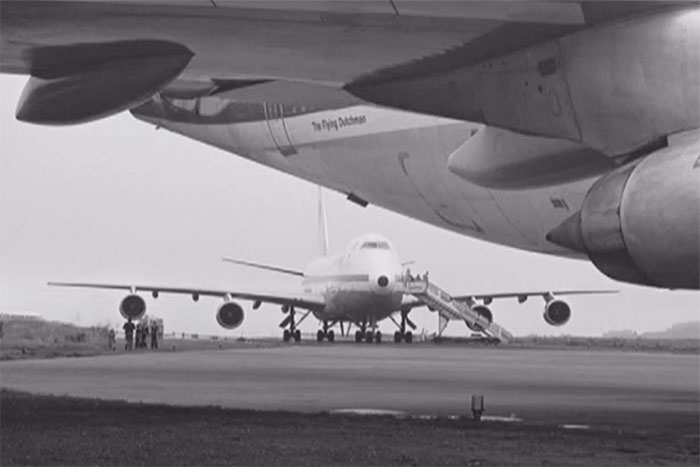Two Boeing 747s collide, killing nearly 600: The catastrophic crash that changed the global aviation industry
More than four decades later, it remains the deadliest accident in aviation history , killing 583 people, injuring dozens and leaving thousands with lifelong psychological trauma.
After several hours of delay, passengers on Pan Am Flight 1736 were finally ready to take off. They were just minutes away from their much-anticipated cruise across the Mediterranean Sea.
The Pan Am plane was slowly taxiing down the only runway at Tenerife airport when passengers suddenly saw the plane veer off course to the left. Thinking it had accidentally veered off course, it turned out that in the cockpit, Captain Victor Grubbs and First Officer Robert Bragg were desperately trying to steer the plane sideways.
They saw horror unfold before them. A KLM 747 was hurtling down the runway from the opposite direction. Captain Grubbs and his crew tried their best to get out of the way, even if it meant running into the grass.
But they didn't.
On March 27, 1977, at 5:06 p.m. local time, Pan Am Flight 1736 and KLM Flight 4805 collided violently on the runway of Los Rodeos Airport in the Canary Islands.

A photo taken just before the crash shows Pan Am 1736 parked directly behind KLM 4805. (Photo: HistoryNet).
How could a seemingly unlikely collision between two 747s happen?
In the years since, much of the blame has been placed on KLM captain Jacob van Zanten. But behind the scenes, a series of mistakes and astonishing coincidences led to the disaster.
Neither plane was originally scheduled to arrive in Tenerife, let alone on the same runway at the same time. Both were carrying passengers to Grand Canary Island. But before the 747s could land on the island, terrorists bombed the terminal at Grand Canary's Las Palmas airport. As a result, all flights to the island were grounded and diverted to nearby Tenerife.
To kill time, Captain Grubbs gave the 380 passengers on the Pan Am a tour of the cockpit of the 747. According to the recording recovered after the accident, Mr. Grubbs did not understand why they had to land, when the plane could have stayed in the air because it had plenty of fuel. This is also considered a coincidence , because if Pan Am had continued flying, the accident would not have happened.
Meanwhile, the 234 passengers on the KLM disembarked and landed at the Tenerife terminal. Captain Van Zanten decided to refuel the plane. But ironically, as soon as he started refueling, the airport reopened. The KLM had to wait. But the Pan Am was parked right behind the KLM plane. Because of its size, it could not overtake it to take off first.
The KLM now had more fuel, making it heavier and requiring a longer runway to take off. Disaster was now just minutes away.
Meanwhile, the fog began to thicken, visibility rapidly decreasing.

Just before 5 p.m., the control center gave the KLM permission to start its engines and enter the runway. Due to a technical error in communication between the crew and the control center, the Pan Am missed its exit, and the KLM made a 180-degree turn and ran onto the same runway as the Pan Am. And the airport had no ground radar.
'Prepare for take-off. I'll call you ,' the voice from the control tower became one of the most misunderstood sentences in aviation history. Captain Van Zanten only heard the word 'take-off' . As KLM accelerated, co-pilot Schreuder asked again: 'Is Pan Am still on the runway?' but Van Zanten did not hear the final precious moments.
The horror happened when the Pan Am plane suddenly appeared out of the fog. Van Zanten tried his best to get the plane into the air but failed. The tail of the plane scraped a 20 meter deep trench on the runway. The collision killed all passengers on KLM 4805 and most of the people on Pan Am 1736 .

The wreckage of Pan Am Flight 1736 is scattered across the Los Rodeos runway. (Photo: PA/Getty Images).
The scene outside the plane was chaotic, with flames billowing and huge plumes of black smoke rising from the Pan Am plane. The wreckage of KLM 4805 was engulfed in flames 365 meters from the runway. Despite their own injuries, the Pan Am crew and the four surviving cabin crew members did their best to guide the surviving passengers to safety.
In the years since the Tenerife crash, the island's government has completed a new airport with ground radar. The international aviation industry has also been forever changed since the Tenerife disaster to prevent another similar disaster.
- 14 cases of rare death after a catastrophic plane crash
- Rear seat is safer when the plane falls
- Notable accidents involving Boeing 777
- Boeing supercar has been discontinued globally
- Malaysia Airlines Boeing 777 lines
- The scene listed the debris of the plane falling in Russia
- 'Secrets' have never been revealed about aviation
- When the real bird throws down, the iron bird
- The father of the Boeing 747 died
- How did a piece of tape damage 70 passengers on the plane?
- QZ8501 may be typical of a new type of risk with aviation
- Why do birds often crash into airplanes?
 'Fine laughs' - Scary and painful torture in ancient times
'Fine laughs' - Scary and painful torture in ancient times The sequence of numbers 142857 of the Egyptian pyramids is known as the strangest number in the world - Why?
The sequence of numbers 142857 of the Egyptian pyramids is known as the strangest number in the world - Why? History of the iron
History of the iron What is alum?
What is alum?